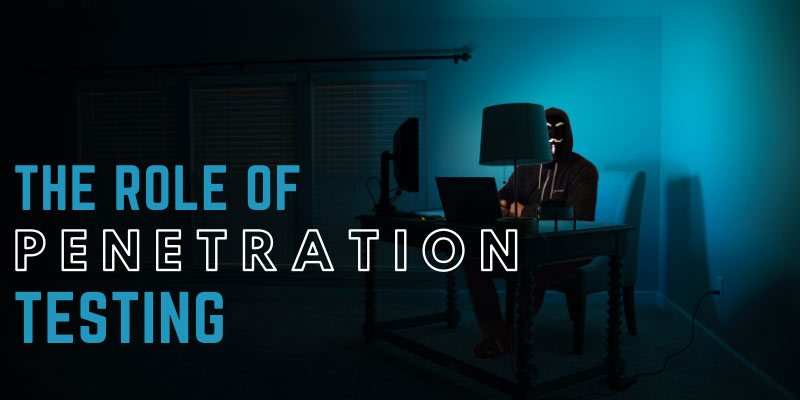
No matter your company’s size, business website cybersecurity should be a high priority. However, merely installing security software and making sure you have an SSL certificate isn’t enough.
You also need to perform internal business website cybersecurity audits at least once a year. And to do this, you need to have a general understanding of penetration testing and why it’s a vital part of auditing a business website’s cybersecurity.
Let’s dive in.
What is Penetration Testing?
Simply put, penetration testing is a security assessment method. Also known as pen-testing, it involves putting your current cybersecurity tools to the test by simulating an external attack and/or internal leak.
In other words, penetration testing is ethical hacking. You authorize an individual or an agency to attempt to exploit your system.
Why is Penetration Testing So Essential?
Identity Force offers a long list of big businesses that experienced data breaches in 2019. But it’s not just the big companies getting targeted: 43% of all cyberattacks are aimed at small businesses.
This is why penetration testing is so essential as part of a business website cybersecurity audit. It allows you to properly measure the effectiveness of your current cybersecurity systems. This shows you how well-protected you really are against things like data leaks and malware.
If there are vulnerabilities, you’re able to see what and where they are. With this information, you can then look at ways to improve those areas, as well as reinforce those already performing well.
How to Perform Penetration Testing for Websites

While the “what” is fairly simple, the “how” is a bit more complicated. There are 5 basic steps involved, which we’ll go through in the next few subsections.
1. The Planning Stage
Penetration testing won’t help you much if you haven’t first thought about which systems you need to target. This is often dealt with at the beginning of a holistic cybersecurity audit, when you make a list of the assets most likely to be targeted by a real attacker.
An obvious example is your business’s sensitive data, which should include any customer data you collect. What some people tend to overlook, however, are the things your business cannot operate properly without – such as internal documentation.
The idea isn’t to create a long list of absolutely everything and then test all of it. In an ideal world, this would be a great way to go about cybersecurity audits in general.
However, doing so will quickly become too expensive to be feasible – especially if you try focusing your cybersecurity efforts on protecting everything.
What you need to do is separate the full list into two sections: the essentials (which will undergo penetration testing) and the things that aren’t as important (and don’t need to be audited). By doing this, you can narrow the scope and focus on the big stuff, rather than spread your efforts and resources thin.
That said, when it comes to penetration testing, the planning stage goes a little bit further than merely identifying the targets. Once you have your list ready, you also need to do some market research on their specific cybersecurity vulnerabilities.
A resource like Vulnerability Research Labs will help make this step a lot easier. The final stage of preparing for penetration testing is deciding which methods and tools will be used.
2. Scanning

Once you have a list of assets, their vulnerabilities, and your tools figured out, it’s time to start the penetration testing process. To do so, you need to scan those assets and the cybersecurity measures you set up to protect them.
This typically follows a two-step approach. You begin with a static scan, which is where you analyze your coding. Because this is done in a static state, all of the code will be scanned in one go by the software used. The results will give you an estimation of how the coding behaves while it’s being operated.
A dynamic scan, on the other hand, allows you to analyse the code while it’s being run, giving you a real-time picture of how well your cybersecurity measures are performing. Most experts consider it a more practical method for this reason, and will typically follow up a static scan with a dynamic scan.
3. Penetration
Based on your planning, you (or the company you hired to perform an external cybersecurity audit for your business website) will start probing for vulnerabilities.
This is typically done using information gathered through your static and/or dynamic scanning phase, as well as the threats you defined as part of your overall audit planning.
These help narrow the scope of your penetration testing to a manageable level. Additionally, they help refine the list of tools and methods you identified earlier.
For example, you might decide backdoor attacks are a bigger threat to your business’s cybersecurity than SQL injections. With this information in hand, you can focus your penetration testing around those backdoor vulnerabilities while giving SQL injections second priority.
As part of this step, your penetration tester will attempt to gain access to your assets. They might start by focusing on the vulnerabilities highlighted in your research, though others might also be targeted.

Ideally, they’ll also perform some phishing attempts to see how easy it would be to trick one of your employees into downloading some kind of malware or virus that gives them access to your system. This shifts the focus away from solely external threats and takes the human factor of cybersecurity into consideration as well.
The purpose of this stage in penetration testing is to not only identify any existing vulnerabilities, but to also exploit them.
This goes beyond merely gaining access. Your penetration tester will also attempt to do things like steal data, escalate privileges, and intercept data. The idea here is to see what the full effects of a successful attack would be.
4. Simulating a Persistent Threat
Once your penetration tester successfully gains access to your assets, they’ll see how long they can maintain access. In penetration testing, this is typically a matter of days or (at the most) weeks.
The purpose of attempting to maintain a presence in your system is to see whether a successful exploit will allow the attacker to gain more in-depth access. This is known as an advanced persistent threat, which can often last for months and allow an increasing amount of data (etc.) to be stolen.
It also tests your cybersecurity recovery strength. In other words, does your system (including in-house technicians) detect the unauthorized user?
5. Final Evaluation

At the end of the penetration testing period, your penetration tester(s) will compile a report. The report will include specific information on the exact vulnerabilities discovered and exploited, what kind of data was accessed (and how much), and how long they were able to maintain a simulated advanced persistent threat undetected.
This report is then used by your cybersecurity team to implement stronger preventative measures to better protect your business website.
Final Word

Penetration tests play an essential role in auditing your business website security, but they don’t come cheap. According to Hacken, the average cost of a professional external penetration test is between $4,000 and $100,000.
Still, for the sake of security, privacy, and peace of mind, it’s worth every penny.
This is guest post article written by Mandee Rose, Chief Editor of


